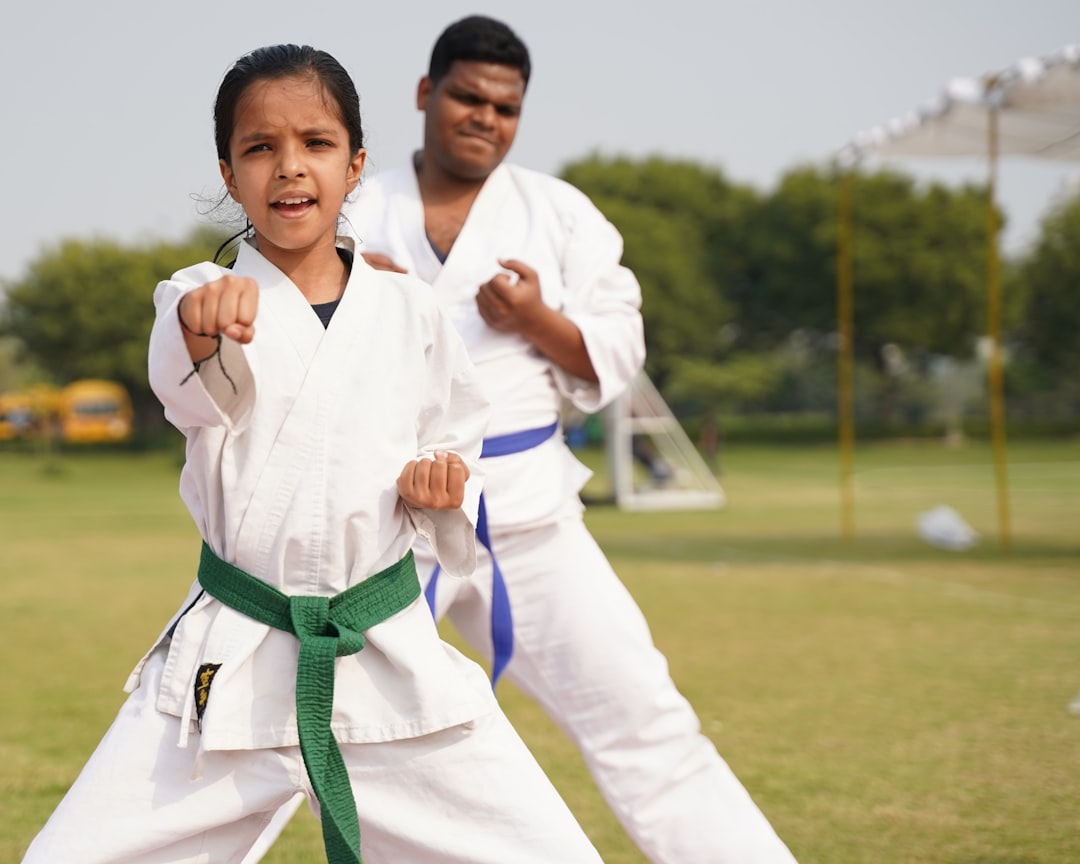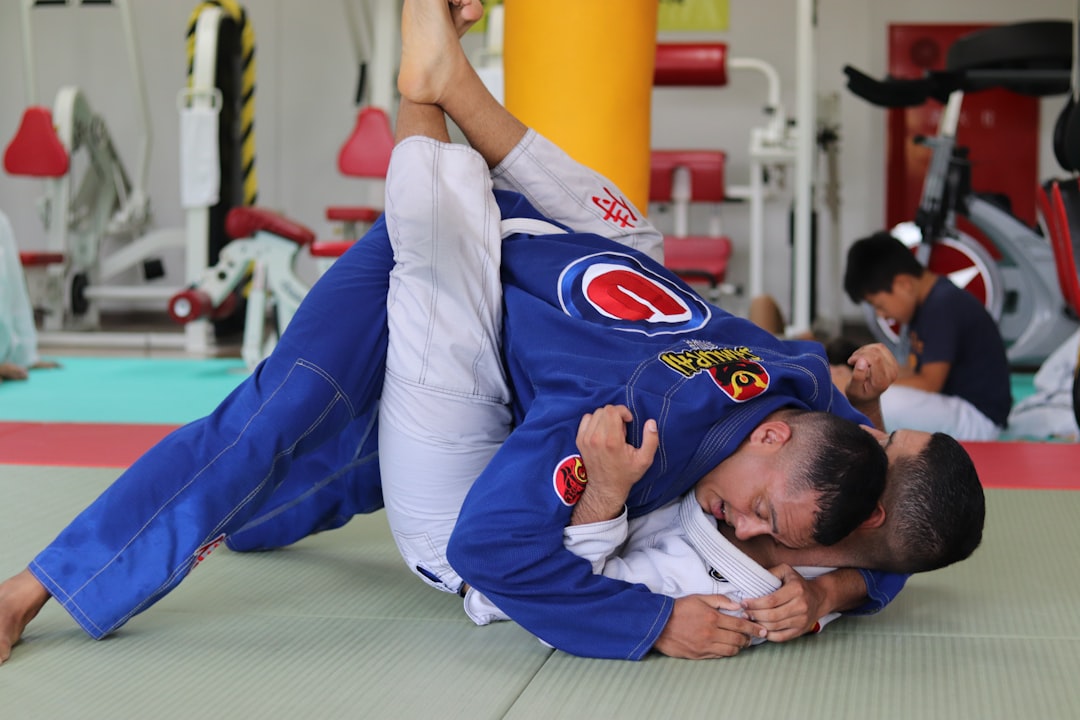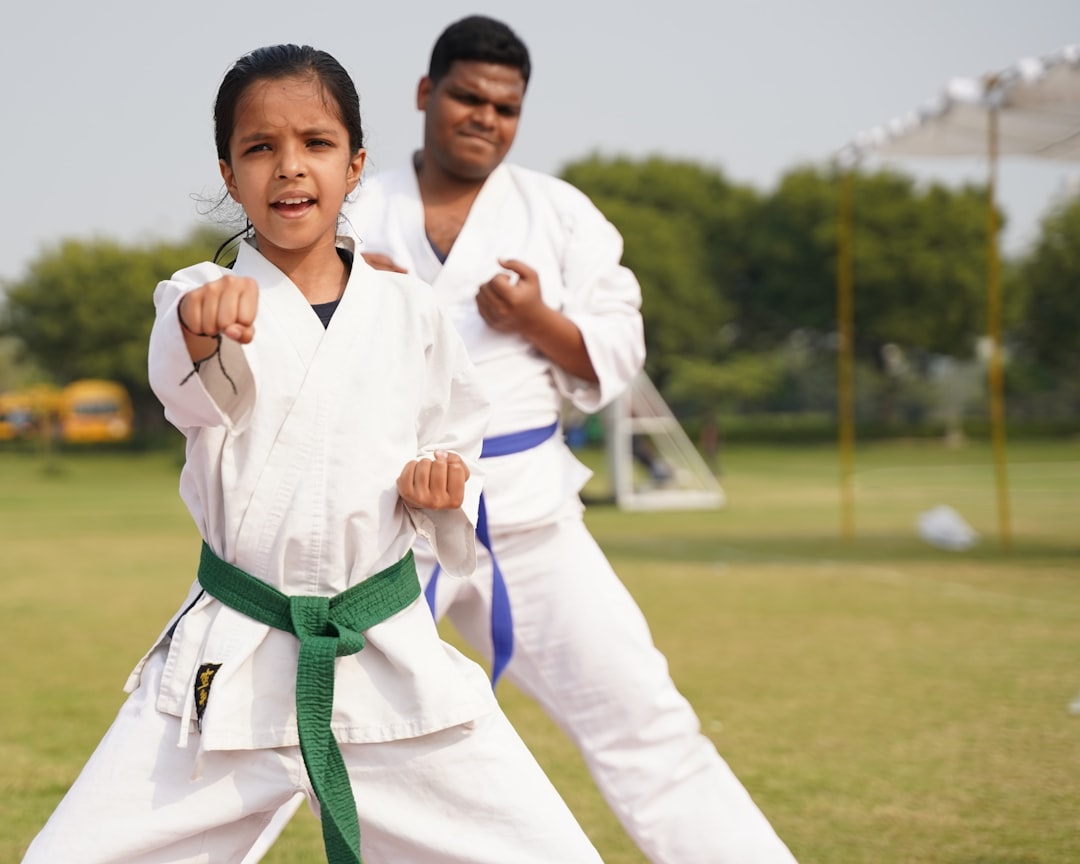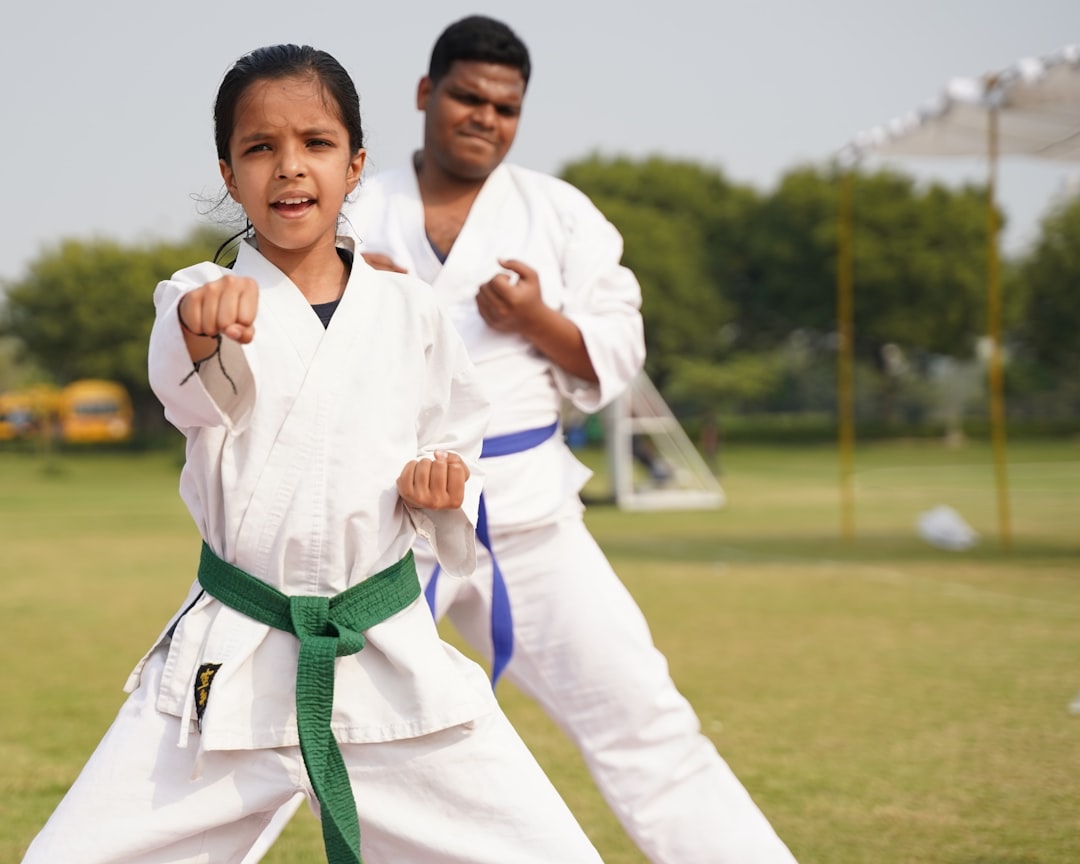The karate uniform, or gi, is a central element in karate practice, embodying respect and signifying the practitioner's rank. It consists of a jacket called an uwaagi, trousers known as nagi, and sometimes an additional vest or skirt based on gender. These garments are made from durable cotton or hemp fabric to facilitate movement and withstand rigorous practice. The obi, or belt, around the waist signifies the wearer's skill level, from white for beginners to black for advanced masters. The term "karate uniform name" is integral to understanding and respecting this traditional attire, which is both a functional training garment and a symbol of karate's cultural heritage. Proper care, including gentle washing with specific detergents, avoiding fabric softeners, and maintaining folds for creases, ensures the gi retains its integrity over time, essential for both the practice and the respect of the discipline.
When stepping onto the mat, practitioners of martial arts don a garb that transcends mere attire—it’s a symbol of discipline and respect. Among these, the karate uniform holds a unique significance. This article delves into the karate uniform name, its composition, historical roots, selection process, and maintenance. From understanding the essentials to exploring the origins behind the term ‘karate uniform,’ readers will gain insights into what defines this quintessential martial arts attire.
- Understanding the Essentials: The Composition of a Karate Uniform
- Breaking Down the Karate Gi: Key Elements and Materials
- Historical Evolution: The Origins and Etymology of 'Karate Uniform' Terminology
- Selecting Your Gi: Factors to Consider When Choosing a Karate Uniform
- Maintenance Matters: Caring for Your Karate Uniform to Maintain Its Integrity and Appeal
Understanding the Essentials: The Composition of a Karate Uniform

When practicing the disciplined art of karate, donning the appropriate attire is crucial to both performance and respect for the tradition. A karate uniform, often referred to as a gi, is more than just a garment; it’s a symbol of the martial artist’s dedication and commitment. The gi typically consists of a jacket, trousers, belt (obi), and sometimes a vest or skirt (based on gender). Made from heavy cotton or hemp fabric, these components are designed to facilitate movement while providing durability for the rigorous practice of karate techniques. The jacket, known as the uwaagi, buttons up the front and reaches just past the waist, with long sleeves that can be secured at the wrist. The trousers, called nagi, are straight-legged and fasten around the waist and knees. The belt signifies the wearer’s rank within the discipline, from white (indicating a beginner) to black (symbolizing mastery). What do you call the top part of a karate uniform? The top is called an uwaagi, and what is the bottom portion called? The bottom portion is called nagi. These elements, combined in a traditional pattern, create the uniform that martial artists wear during training and grading.
Breaking Down the Karate Gi: Key Elements and Materials

When practicing the disciplined art of karate, practitioners adorn themselves in a specialized garment known as a karate uniform, commonly referred to as a “Gi.” This traditional attire is not merely a piece of clothing but a symbol of respect and modesty within the martial arts community. The Gi typically consists of a jacket and trousers, both top and bottom being crafted from sturdy fabric that allows for ease of movement and durability during practice or competition. The question often arises regarding the specific materials and design elements that constitute an authentic karate Gi. Generally, the jacket is composed of cotton or hemp weave, featuring a belt area at the waist where the practitioner’s rank is displayed. The trousers are also woven from similar materials and designed to taper slightly at the ankles, ensuring they stay in place during movements. Are the fabrics used in a karate Gi typically heavy or lightweight? They are usually of a moderate weight, selected for their ability to provide a balance between comfort and visibility, allowing instructors and peers to observe technique and form accurately. The Gi’s design is standardized to facilitate universal recognition and respect within the sport while accommodating the functional needs of karate practitioners around the world.
Historical Evolution: The Origins and Etymology of 'Karate Uniform' Terminology

The term used to describe a karate uniform has a history that intertwines with the sport’s origins and cultural significance. Originating from the traditional garments of Okinawa, where karate itself was developed, the karate uniform evolved over time to meet both functional and cultural needs. Initially, practitioners wore simple cotton or hemp garments, known as “dogi” in Japan, which were adapted for use in karate training. As karate spread beyond its island origins, the design of the uniform underwent changes to accommodate different body movements and to be more recognizable as a martial arts uniform globally.
The etymology of the term for a karate uniform is directly linked to the Japanese language, where “dogi” refers to the garment used in various martial arts. However, in the context of karate, it is often referred to by its own specific name, which varies slightly from the standard term used in other martial arts. For instance, the term “keikogi” is also used in some styles of karate and means “training clothes.” The name given to a karate uniform thus reflects both its function as training attire and its cultural heritage, highlighting the deep roots of the practice. What we now refer to as a karate uniform has come a long way from its modest beginnings, evolving into a standardized piece of equipment that is recognized and utilized by practitioners around the globe.
Selecting Your Gi: Factors to Consider When Choosing a Karate Uniform

When venturing into the world of martial arts, selecting the right karate uniform, often referred to as a gi, is crucial for both comfort and respect for tradition. A high-quality gi not only supports your movements but also signifies your commitment to the practice. When choosing a karate uniform, consider the material first; traditional gis are made of cotton or hemp blends, which offer durability and breathability. These materials allow for ease of movement during practice and withstand the rigors of regular use. Another important factor is the fit; a gi that’s too tight can restrict your movements, while one that’s too loose may hinder your instructor’s ability to assess your techniques correctly. Is the gi made from a durable and breathable fabric? Does it offer a fit that balances mobility with formality? The right answer will depend on your personal preference, the style of karate you practice, and the preferences of your dojo. Typically, a well-fitted gi should be snug but not constricting, providing ample room for motion without being baggy or oversized. Additionally, consider the color and design; white is the most traditional and widely accepted color in many karate disciplines, symbolizing purity and humility. Do you prefer the classic white, which signifies a clean slate and respect for tradition? Or are there specific colors recommended by your sensei or required by your dojo? Selecting a gi that aligns with these factors will ensure you have an effective tool for your practice, one that honors the art of karate.
Maintenance Matters: Caring for Your Karate Uniform to Maintain Its Integrity and Appeal

When it comes to maintaining your karate uniform, it’s crucial to understand the best practices for preserving its condition and longevity. The fabric of a karate uniform, often referred to as a gi, is designed to withstand the rigors of training but still requires careful handling to maintain its integrity and appeal. Regular washing is necessary to remove perspiration and odors, but ensure you use a gentle detergent and avoid fabric softeners that can coat the fibers and diminish the uniform’s crispness. After each use, inspect your karate uniform for any signs of damage or wear; this includes checking seams, stitching, and areas of high stress like the knees and elbows. Proper folding and storage, away from direct sunlight and moisture, will prevent fading and mold growth. To preserve the crease on the pants and top, consider using a tailor’s cloth to maintain the correct fold lines during storage. By adhering to these care instructions, your karate uniform will not only serve you well in practice but also look its best for competition or display. Do you wash your karate gi with other clothes? To protect the fabric and ensure it retains its shape, it’s advisable to wash it separately in cold water. How do you maintain the white belt on your karate uniform? The white belt should be kept clean and free of stains; spot-cleaning with a mild detergent is recommended for this portion of your gi.
In conclusion, the term “karate uniform,” often referred to as a ‘Gi,’ is more than just a garment; it’s a symbol of tradition and respect within the martial arts community. From understanding its composition and material selection to recognizing its historical evolution, the article has shed light on the significance of choosing the right Gi for practice and competition. Whether you are a beginner or an experienced practitioner, selecting a Gi that suits your needs and adheres to the principles of karate is essential for both functionality and respect for the discipline’s heritage. Proper maintenance also plays a crucial role in preserving the integrity and appeal of this essential piece of equipment. As you continue on your martial arts journey, remember to honor the karate uniform name by treating it with care and respect, ensuring that it serves as a testament to your dedication and discipline in the art.
